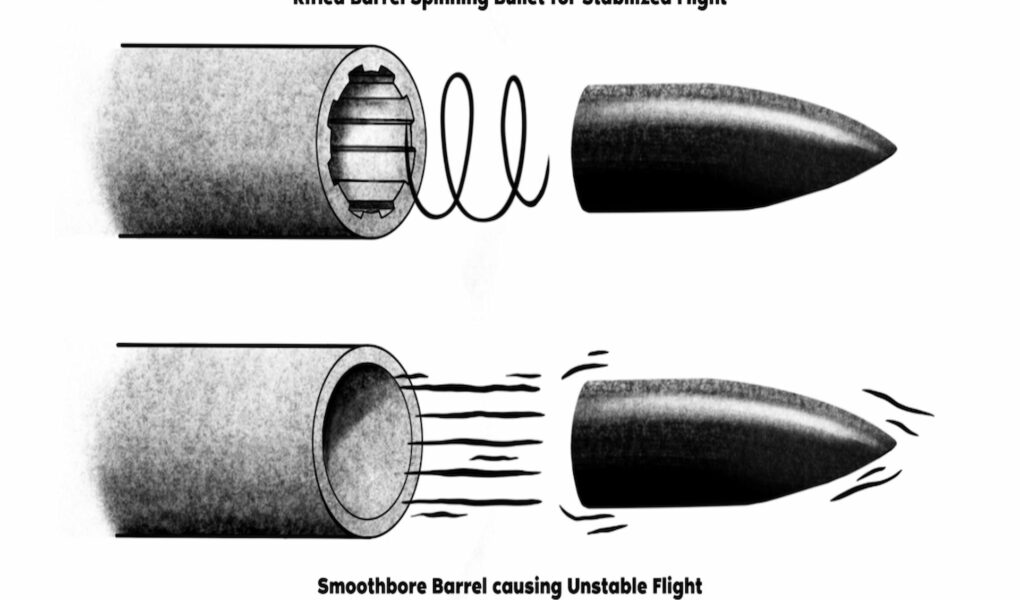Precision shooting and firearm performance hinge on numerous factors, with barrel rifling being a critical component. Rifling consists of spiral grooves cut into the interior of a gun barrel, which impart spin to the bullet, stabilizing it during flight and enhancing accuracy. Sonoran Desert Institute (SDI), accredited by the Distance Education Accrediting Commission (DEAC), highlights the importance of understanding rifling twist rates.
For gunsmiths, competitive shooters and firearm enthusiasts, comprehending the relationship between twist rate and bullet characteristics is essential. This knowledge aids in making informed decisions regarding barrel selection, ammunition pairing and firearm customization, ultimately optimizing performance for specific applications. By integrating these insights into their educational online coursework, the institute equips students with the theoretical and practical understanding necessary to excel in the firearms industry.
Understanding Twist Rate
Rifling consists of lands and grooves machined in a spiral pattern along the inside of a firearm barrel. These spiral forces the bullet to rotate along its longitudinal axis as it exits the barrel. This spin stabilizes the projectile, much like how a quarterback’s spiral stabilizes a football in flight.
The twist rate refers to the distance the bullet travels in the barrel to make one full rotation. It is commonly expressed as a ratio. For example, a 1:10” twist rate means the bullet completes one full revolution every 10 inches of barrel travel. A faster twist rate (e.g., 1:7″) spins the bullet more rapidly, while a slower twist rate (e.g., 1:12″) spins it more slowly.
Bullet Stability
Stability is the primary function of rifling. Without it, a bullet would wobble, tumble, or veer unpredictably after leaving the barrel. The right twist rate provides gyroscopic stability, keeping the bullet’s nose pointed forward as it travels through the air.
A bullet that is under-stabilized cannot spin fast enough, which can lead to yawing or keyholing, where the bullet strikes the target sideways, leaving an oblong hole. On the other hand, over-stabilization can also affect accuracy, particularly with long-range shooting, as excessive spin can introduce gyroscopic drift or amplify minor imperfections in bullet construction.
Caliber and Bullet Weight Considerations
Different calibers and bullet types require different twist rates. Lighter, shorter bullets generally stabilize well with slower twist rates. Heavier or longer bullets need faster twist rates to maintain stability, especially at lower velocities. For example:
- A .223 Remington firing a 55-grain bullet might perform best with a 1:12″ twist.
- Heavier 75–77 grain bullets of the same caliber often require a 1:7″ or 1:8″ twist to stabilize properly.
The same principle applies across calibers. A .308 Winchester firing a 150-grain bullet might stabilize well in a 1:12″ twist, while match-grade 175-grain bullets may demand a faster 1:10″ or 1:11″ twist.
Accuracy and Long-Range Precision
For long-range shooting, matching the bullet’s ballistic coefficient (BC) with the appropriate twist rate is especially important. Higher BC bullets tend to be longer and more aerodynamically shaped, which allows them to maintain velocity and resist wind drift at a distance. However, their length also makes it harder for them to stabilize without the correct twist rate.
An improperly stabilized bullet may still appear accurate at short distances but begin to lose consistency beyond 200 or 300 yards. At long distances, instability can result in vertical stringing, flyers or unpredictable drops, factors that become critical in competitive shooting or tactical applications.
Twist rate also influences group size, a major indicator of a rifle’s precision. Competitive sharpshooters often fine-tune their twist rate to match specific loads, ensuring sub-MOA accuracy and repeatable shot placement.
Barrel Life and Performance Trade-Offs
Faster twist rates can increase barrel wear, particularly in high-velocity calibers or during sustained fire. The increased friction and centrifugal force of rapidly spinning projectiles can accelerate throat erosion and reduce overall barrel life.
For this reason, manufacturers and shooters often weigh the benefits of tighter twist rates against the need for long-term durability. In many cases, a slightly slower twist that still offers adequate stability can extend barrel service life without compromising performance.
Some precision shooters also report that slightly over-stabilized bullets may experience marginally reduced accuracy with thin-jacketed or imperfectly balanced bullets. For this reason, selecting high-quality ammunition and understanding your barrel characteristics is key to maximizing potential.
Twist Rate and Suppressed Firearms
Twist rate also plays a role in the performance of suppressed firearms, particularly in subsonic applications. Heavier subsonic bullets, like 220-grain .300 AAC Blackout rounds, require fast twist rates (e.g., 1:7″) to stabilize at low speeds. Using a slower twist with subsonic rounds may lead to baffle strikes or keyholing, which can damage suppressors and degrade accuracy.
Shooters who use suppressors must, therefore, carefully consider twist rate and balance bullet weight, velocity and stability, especially when designing custom setups for quiet operation or specialized missions.
Tools for Determining Optimal Twist
Understanding the intricacies of barrel twist rates is essential for optimizing firearm performance. One foundational method for determining the appropriate twist rate is the Greenhill Formula. In this formula, TTT represents the twist rate in inches per turn, DDD is the bullet diameter in inches, LLL is the bullet length in inches, and CCC is a constant (typically 150 for velocities under 2800 fps).
Modern advancements have led to ballistic calculators that factor in additional variables such as muzzle velocity, altitude, and temperature. These tools provide a more comprehensive analysis, ensuring bullets achieve optimal gyroscopic stability under varying conditions.
Barrel manufacturers often supply twist rate charts, aligning bullet weights with suitable rifling profiles. Such resources guide shooters in selecting the right twist rate for specific applications, be it hunting, competition, or tactical scenarios.
At SDI, students learn the science of ballistics, firearms design, and barrel engineering. Courses like “Advanced Ballistics” equip students with the knowledge to evaluate twist rates, select appropriate components and troubleshoot accuracy issues in real-world shooting scenarios.
In the field of firearms, attention to detail is paramount. Rifling geometry, though a minute component, plays a significant role in bullet stabilization and overall accuracy. Whether constructing a custom rifle, choosing factory ammunition, or aiming for tighter shot groups, a thorough understanding of twist rates unlocks a firearm’s full potential.



